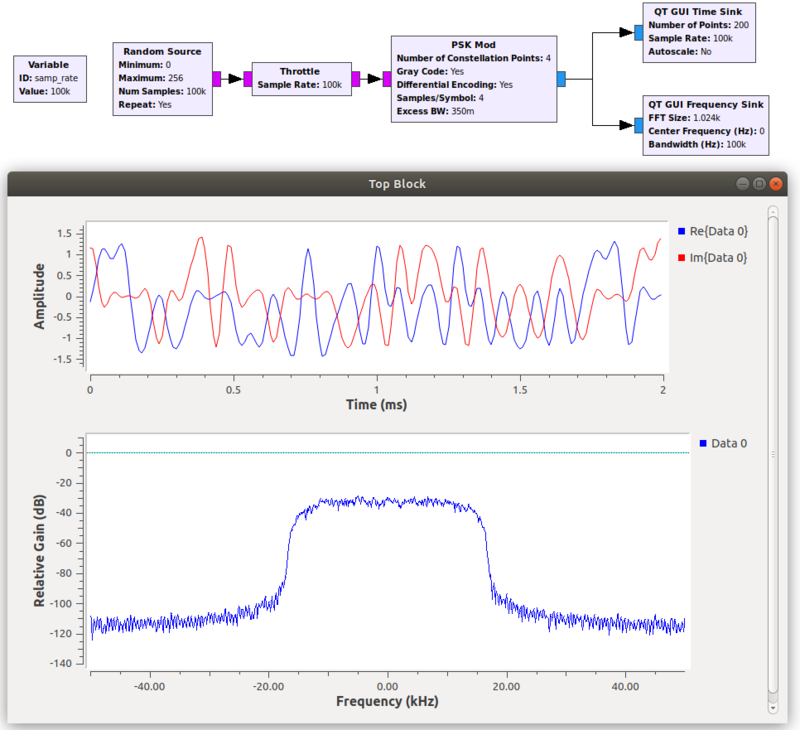Random Source: Difference between revisions
(Benchmark added) |
|||
| Line 14: | Line 14: | ||
(''R''): <span class="plainlinks">[https://wiki.gnuradio.org/index.php/GNURadioCompanion#Variable_Controls ''Run-time adjustable'']</span> | (''R''): <span class="plainlinks">[https://wiki.gnuradio.org/index.php/GNURadioCompanion#Variable_Controls ''Run-time adjustable'']</span> | ||
; | ; Output type | ||
: | : Available options are int, short or byte | ||
; | ; Minimum | ||
: | : The lower limit of the range of generated values (included in the output) | ||
; Maximum | |||
: The upper limit of the range of generated values (not included in the output) | |||
; Num Samples | |||
: Total number of samples that are generated in the output | |||
; Repeat | |||
: Yes/No | |||
== Example Flowgraph == | == Example Flowgraph == | ||
Revision as of 12:58, 19 January 2022
Generates a number of samples of random numbers of [min, max) meaning the max value won't be included. Repeat samples if specified. Useful for creating bytes of information for testing a modulator.
Ex: With min=0 and max=2, the sequence 01110101... of length num_samps will be generated.
Supports an output of type int, short, and byte.
This block differs from Random Uniform Source:
This block uses Numpy to generate a fixed random vector of values. The output of this block repeats every num_samps, and hence has high autocorrelation with that period.
The algorithms used to generate the random numbers differ, as well: Numpy, and hence Random Source, use MT19937¹, whereas the Random Uniform Source uses XOROSHIRO128+, which has a period of 2128-1 and is hence to be preferred if autocorrelation over a window of length num_samps is relevant.
Parameters
(R): Run-time adjustable
- Output type
- Available options are int, short or byte
- Minimum
- The lower limit of the range of generated values (included in the output)
- Maximum
- The upper limit of the range of generated values (not included in the output)
- Num Samples
- Total number of samples that are generated in the output
- Repeat
- Yes/No
Example Flowgraph
Source Files
- C++ files
- TODO
- Header files
- TODO
- Public header files
- TODO
- Block definition
- TODO
Computational Performance
File:Benchmark prng.grc done on a Intel(R) Core(TM) i7-4790 CPU @ 3.60GHz, 8GB RAM VOLK 2.5.0, GNU Radio 3.10.0.0-rc1, Linux 5.15.11
| Block | Number of Samples / Period after which samples repeat | Throughput (in 106 samples per second) | Note |
|---|---|---|---|
| Random Source | 1000 | 838 | default setting |
| Random Source | 220=1,048,576 | 824 | |
| Random Source | 224 | 812 | |
| Random Source | 228 | 813 | Initialization of the random vector needs nearly 30s, eats 4GB of RAM |
| Random Uniform Source | 2128-1 | 282 |
¹ The slightly superior randomness properties of MT19937 over XOROSHIRO128+ don't matter within the maximum size of a vector of values on a PC, and are generally unnoticable in an SDR contex

